#cloudmigrationsolutions
Explore tagged Tumblr posts
Text
#cloudmigration#cloudmigrationserviceprovider#cloudmigrationsolutions#cloudmigrationservices#cloudmigrationserviceconsulting#cloudmigrationservicecompany#cloudmigrationconsultingservices
0 notes
Text
Data Warehousing and Data Migration Service
We have experienced consultants that assist businesses with the right knowledge of tools to integrate into their business for Data Migration and Warehousing. Data migration and warehouse management are used by businesses to proactively evolve with technological changes. We at Polyxer, accelerate and simplify data migration & warehouse management of business applications to the cloud seamlessly & securely.
What We Do?
Application Migration
Database Migration
Cloud Migration
#cloudmigrationcompany#clouddatawarehousesolutions#cloudmigrationservices#cloudmigrationsolutions#cloudmigrationconsultingservices#datawarehouseautomation#datamigration#datawarhousing#migration#migrationservice
0 notes
Text
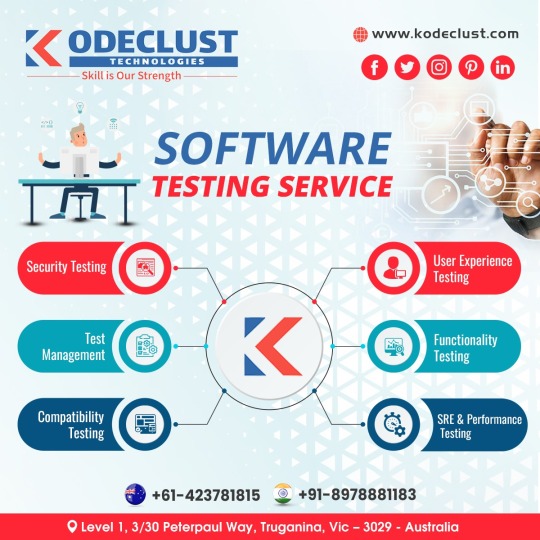
At Kode Clust, We specialize in providing comprehensive software testing solutions to ensure flawless performance and user satisfaction. With our skilled team of experts and state-of-the-art tools, we meticulously analyze, evaluate, and fine-tune your software, guaranteeing a seamless user experience.
Let's Connect:
+61-423781815, +91-8978881183
emai: [email protected]
website: www.kodeclust.com
#cloudmigrationcompany#cloudmigrationsolutions#cloudservices#datamigration#datatransfer#cloudtransfer#cloudcomputing#managedcloudservices#cloudconsultationservices#cloudmigrationservices#softwaretesting#manualtesting#testing#software#softwaretestingservice#penetrationtesting
0 notes
Text
Migration to Microsoft Azure
So, is your company ready for the cloud? Migration to Microsoft Azure may indeed be the move needed to make you the game-changer!
Moving to Azure has such wonderful benefits, but don't forget to weigh all that's to offer and against before making that switch.
Benefits of Azure Migrate. Scalable: Scale up or down according to the growth of your business. Cost-effectiveness: You pay for only what you have used, and hence, no waste or unnecessary spending. Top-class security: Reap robust features and compliance certificates with Azure. Global access. Improve the performance of your application across the globe. All the data centers of Azure are accessible to every single person on the earth. Hybrid integration. Hybrid integration is not really an advantage but rather a feature that you would welcome with glee. It can be quite easy to integrate on-premises data into the cloud resources.
Dealing With Cons: ⚠️ Steep Learning Curve: It may take some time for your team to get accustomed to the Azure platform. ⚠️ The system May Experience Downtime: This is a very rare possibility, however, but it can also come in the way of operation. ⚠️ Cost Upward Creep: In case you do not learn how to restrain usage properly as workloads scale, then it becomes a problem.
Most of the times with Azure are characterized by having most pros weighed against very few cons, offering it flexibility and security in a global reach. Are you considering the move? Let's connect to see how we can work toward making the Azure migration suited for your business!
#cloud #cloudmigration #migrationservices #migrationsolutions #cloudmigrationservices #cloudmigrationsolution #azure #microsoft #microsoftazure #cloudcomputing
1 note
·
View note
Text
Top 5 Steps to Achieve a Successful Digital Transformation through Cloud Migration

As business enterprises pursue digital transformation to accelerate decision-making, improve processes and workflows, create superior customer experiences, and generate more revenue streams, the cloud can act as a catalyst. It can position the machine first approach and enable enterprises to automate their business processes and plug into humongous on-demand computing power at lower costs than legacy computing architectures. The cloud is a critical computing resource for enterprises to create disruptive models and achieve flexibility, affordability, and scalability.
Statistically, the spending on public cloud services is going to reach a whopping $397.5 billion (source: Cloudwards.net). Also, the cloud has the potential to generate revenues between $100 billion and $170 billion for healthcare companies by 2030 (Source: McKinsey). Maintained by service providers at remote data centers, cloud technology has become the cornerstone of digital transformation for enterprises. It is a no brainer that to remain competitive, businesses have to migrate to the cloud along with their legacy systems. Joining a cloud migration platform entails taking a number of strategic steps as mentioned below:
5 steps businesses should take to achieve a successful cloud migration
The key steps that are critical to achieving a successful cloud application migration solution are as follows:
1. Create a goals-based cloud migration strategy: Enterprises are willing to develop cloud strategies based on their future needs and current IT infrastructure and capabilities. However, the competitive environment of today won’t allow enterprises that are smug and caught in inertia to survive. They need to make a cloud migration readiness assessment to understand their competitive position, determine their migration goals, and analyze their strengths and weaknesses. For instance, they must decide whether they want to achieve business agility, bolster security to mitigate risks, reduce reliance on legacy systems, convert CapEx to OpEx, or switch to a DevOps approach.
Nevertheless, before choosing one or more of the above options, businesses should ensure their strategy is business-focused and developed in collaboration with the real stakeholders. Importantly, the outcomes for cloud migration testing and the way they should be measured must be established beforehand. To plan a robust cloud migration testing approach, businesses should engage the services of experts to help them sift through priorities and include critical things.
2. Calculate the total cost of migration: Moving away from legacy systems into unknown territory can be fraught with risks. So, while devising any cloud migration solutions, businesses should identify the risk factors and address them upfront. Remember, transitioning to a cloud-based operating environment can be costlier than anticipated. It may even transpire that after making any cloud migration risk assessment, businesses may find it difficult or not worthwhile to migrate certain workloads to the cloud. This can happen after making substantial investments in setting up the hardware infrastructure and obtaining software licensing. Besides, legacy applications may require reconfiguring or refactoring before being migrated to the cloud.
Also, the new cloud-based processes may require the hiring of additional staff. To determine the total cost of migration, businesses need to break it down into individual elements, such as network bandwidth costs, data center operating costs, and disaster recovery costs, among others. Use tools to create price estimates for cloud configuration. But in all this, consider the compelling reasons for cloud migration, namely, geographic distribution, remote access, agility, and scalability, before justifying the costs.
3. Determine the things to be migrated: At the outset, it must be understood that not everything that comes under the IT infrastructure or management can be migrated. This is in spite of the phenomenal expansion of cloud architecture. So, businesses should prepare an inventory of applications, processes, and data and assess their viability for cloud migration. For instance, there is no point in moving non-essential and/or non-standardized applications that are not compatible with the cloud environment. There should be a careful examination of every legacy system and its capabilities to determine if they need to be migrated to the cloud. It should be ascertained whether the assets are going to deliver the benefits that were envisioned for cloud migration.
4. Select the right cloud configuration: After determining the applications and databases to be migrated to the cloud, businesses should choose the right cloud configuration to achieve their goals. For instance, a hybrid cloud model using on-premises applications can yield optimum results for certain organizations. And each configuration may deliver distinct advantages related to control, uptime, security, and scale.
5. Include cloud migration automation: Cloud migration automation can reduce manual effort while also addressing skill gaps, productivity, and consumption. The automation efforts can involve core areas such as installing, patching code, and managing cloud services. By automating the migration effort, businesses can achieve minimal disruption during migration.
Conclusion
Any successful cloud migration and operational readiness thereafter entails a robust cloud migration testing plan. It requires strategic planning, cultural transformation, and technical transition to realize the benefits of flexibility, agility, innovation, and scalability.
Resource
James Daniel is a software Tech enthusiastic & works at Cigniti Technologies. I'm having a great understanding of today's software testing quality that yields strong results and always happy to create valuable content & share thoughts.
Article Source: datafloq.com
#cloudmigrationtesting#cloudmigrationsolutions#cloudmigrationplatform#cloudmigrationautomation#cloudmigrationriskassessment
0 notes
Text
How to Achieve Safe Cloud Migration with Test Automation

Migrating to the cloud has become a business imperative to achieve a host of objectives. These include accelerating innovation, securing databases, delivering services quickly and cost-effectively, gaining insights into real-time scenarios, enabling quick decision making, and responding quickly to customer queries and market scenarios, among others. Most organizations have committed themselves to integrating the cloud into their value chain. As per the cloud computing survey conducted by IDG, about 92 percent of the respondents said that they have at least one application operating in the cloud, 59 percent are planning to migrate most or all of their IT infrastructure to the cloud, and cloud computing is likely to account for 32 percent of all IT budgets.
For enterprises aiming to achieve digital transformation given the backdrop of the pandemic and rising competition, it is important to leverage the benefits of the cloud. However, migrating to the cloud can have its share of risks and challenges. These may involve modernizing and migrating thousands of legacy applications, controlling costs, securing data, achieving an optimal speed of operations, keeping operations up and running during the migration process, and executing cloud migration assurance, among others.
Without doing proper due diligence for cloud migration, enterprises can face high-risk situations such as system downtime, data breaches, server failure, or database errors. This is where a robust cloud migration testing strategy needs to be put in place to bring about a secure, cost-effective, and agile migration. And to manage the workload and ensure the core job of moving data is done properly, QA teams ought to follow cloud migration automation. Before going into the nitty-gritty of enforcing test automation, let us first understand cloud migration testing and its critical role in achieving digital transformation.
What is cloud migration assurance?
Cloud migration involves the transfer of massive amounts of data from on-premise systems to the cloud server. This calls for ensuring the data fields are properly populated or the receiving system is plugged in correctly. This is crucial, for any small mistake can cause a breakdown in the entire value chain. This is why cloud application testing is so important, as it ensures everything has moved to the right place and works as desired. The key metrics used to determine the success of cloud migration testing include application start and response times, the usability of the application on various platforms (mobile devices, desktops, and remote connections), its performance during off-hours, and peak demand.
How can test automation secure cloud migration solutions at speed
Since cloud migration is a high-risk, cost-intensive, and resource crunching process, test automation can help achieve the following outcomes:
The migration process is thoroughly checked to ensure every piece of data and information has been moved to the right destination. This keeps the business-critical processes running uninterrupted.
As the migrated database is updated in real-time, the loss or breach of data can be prevented, thereby upholding the company’s reputation.
Ensures the successful migration of content and data to the correct destination. Any errors identified are fixed quickly, thereby minimizing or eliminating any risk to productivity.
Reduces the number of testers to be deployed as the test automation tool can take over the manual work to deliver quick and consistent results.
Delivers a positive return on investment as the test automation process is able to drive a clean and accurate migration solution.
Tests can be executed in parallel for various devices, browsers, operating systems, and networks.
Continuous delivery can be achieved by running automated tests after deployment and code changes.
How to automate cloud testing services
Automation as a cloud migration testing approach shall constitute of two areas:
Test automation for individual cloud computers (instances): Here, automated tests are created to run on remote computers without any human intervention. The tests should be able to manage various situations, such as handling unexpected messages in the message boxes appropriately, among others. The tools used here should support event tracking and allow control of unexpected situations.
Automation of operations in the cloud: It implies automating the actions to be performed on the instances. These include launch, start, stop, login, upload data, and download data from the instances, among others. The testers should specify the number of instances where the automated test process starts and runs on each instance.
Conclusion
Automating the cloud migration testing approach can obtain a plethora of benefits for the enterprise aiming to migrate its resources to the cloud. These include integrating with the CI/CD pipeline, enabling short feedback loops, enhancing security on public and/or private cloud networks, and enabling test management and reporting.
Resource
James Daniel is a software Tech enthusiastic & works at Cigniti Technologies. I'm having a great understanding of today's software testing quality that yields strong results and always happy to create valuable content & share thoughts.
Article Source: dev.to
#cloudmigrationtesting#cloudmigrationassurance#cloudmigrationsolutions#cloudapplicationtesting#cloudtestingservices#cloudmigrationautomation
0 notes
Link
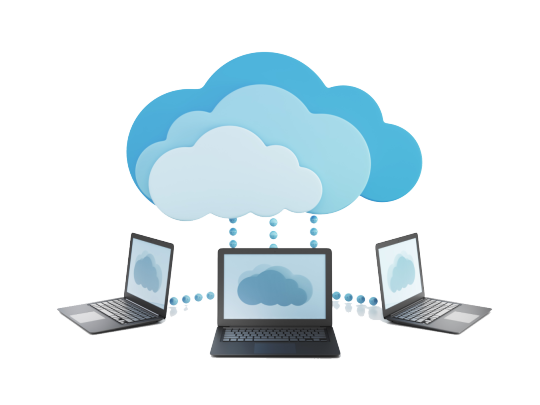
If you need a Cloud Service that Provide End to End Cloud Migration services we will give you best solution. Webcreta Technologies efficiently delivers the Cloud services. As a leading Web Development Company, We believe in providing you a cost-effective Cloud Solutions for your Business.
#CloudMigrations#CloudMigrationServices#CloudMigrationSolutions#CloudDataMigration#CloudMigrationServiceProviders
0 notes
Link
#cloudapplicationdevelopment#CloudMigrationservices#CloudMigrationconsulting#CloudMigrationcompanies#cloudmigrationsolutions#CloudApplicationDevelopmentservices#cloudmigrationconsultingservices#CloudImplementationservices
0 notes
Text
How to see Screenshot of Azure VM from Azure Console
In many situations, we come across to know the current state of VM, without logging into the server through RDP. I generally use the VM Screenshot to see what error message the VM is showing if it fails to boot.
How to see Screenshot of Azure VM from Azure Console
Make sure your storage account is created into the same subscription as the VM.
Select the VM from the Virtual Machine Lists.
Find Boot Diagnostics tool under Support + Troubleshooting section.
If your boot diagnostic is configured, you can see the VM current state as a screenshot as below ↓
If the boot Diagnostic is not configured, you will get a screen as below ↓
How to configure the boot diagnostic?
Click on the message “click here to enable it”
By Default, the status of Boot Diagnostic is Off
Select On & It will give you a dropdown option to select Storage Account.
If your storage account is there on DropDown select that and click on “Save”
If the storage account is not there, select “Create New”
Once all the storage account is configured with the Boot Diagnostic, the target VM Screenshot can be seen.
I hope this is informative and I thank you for investing your time to learn something new.
Contact our trusted Cloud Migration Experts to discuss Azure Cloud Migration capability in more detail. Or why not see our powerful SaaS Cloud Migration Platform in action? Click here to request your personal demo.
1 note
·
View note
Text
Cloud Data Warehousing and Migration Services - Polyxer Systems
We have experienced consultants that assist businesses with the right knowledge of tools to integrate into their business for Data Migration and Warehousing. Data migration and warehouse management are used by businesses to proactively evolve with technological changes. We at Polyxer, accelerate and simplify data migration & warehouse management of business applications to the cloud seamlessly & securely.
What We Do?
Application Migration
Database Migration
Cloud Migration
Visit: Data Migration
#cloudmigrationcompany#clouddatawarehousesolutions#cloudmigrationservices#cloudmigrationsolutions#cloudmigrationconsultingservices#datawarehouseautomation
0 notes
Text
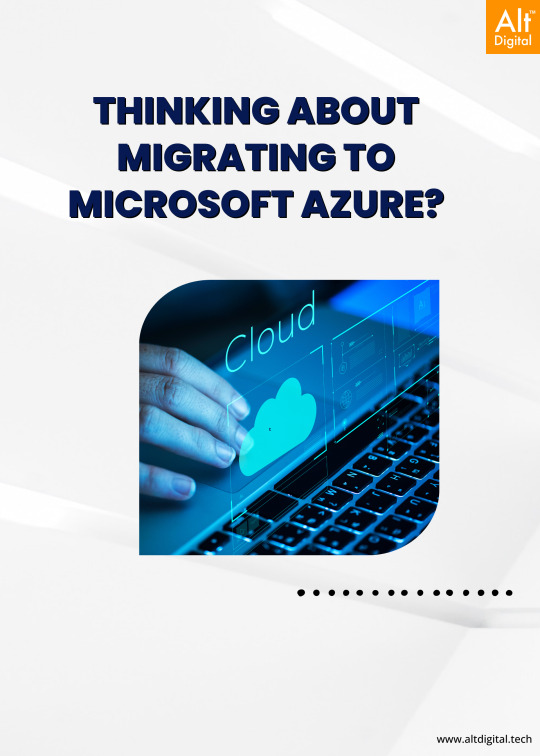
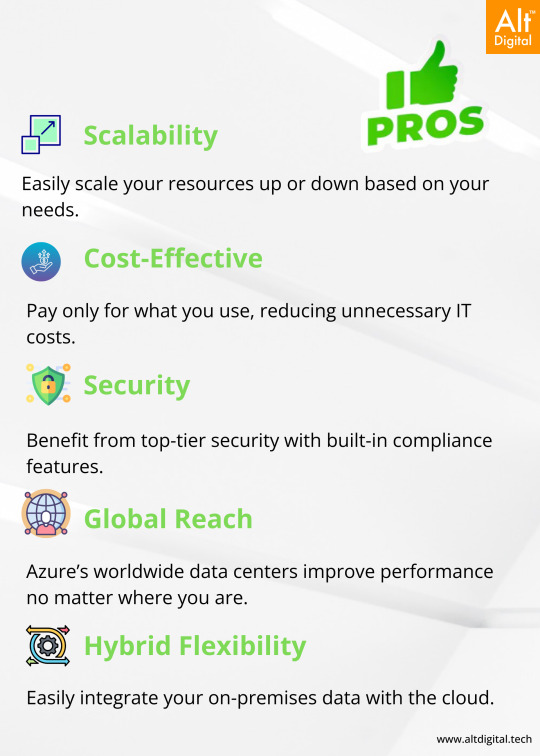
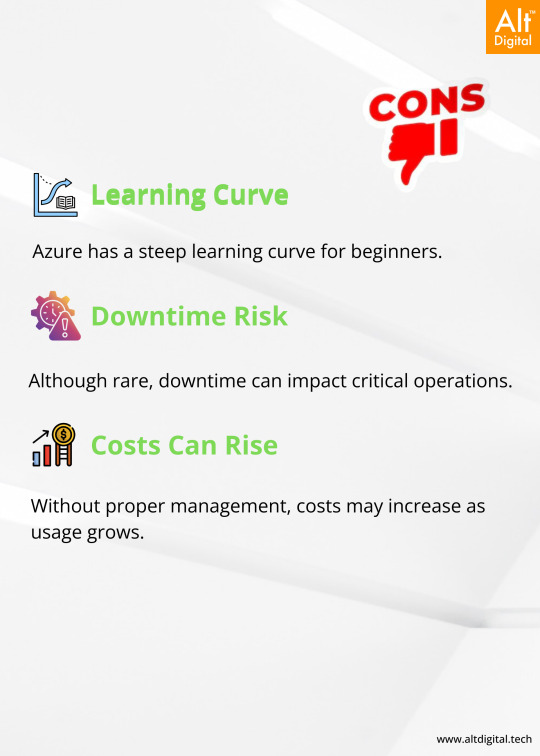

So, is your company ready for the cloud? Migration to Microsoft Azure may indeed be the move needed to make you the game-changer!
Moving to Azure has such wonderful benefits, but don't forget to weigh all that's to offer and against before making that switch.
Benefits of Azure Migrate. Scalable: Scale up or down according to the growth of your business. Cost-effectiveness: You pay for only what you have used, and hence, no waste or unnecessary spending. Top-class security: Reap robust features and compliance certificates with Azure. Global access. Improve the performance of your application across the globe. All the data centers of Azure are accessible to every single person on the earth. Hybrid integration. Hybrid integration is not really an advantage but rather a feature that you would welcome with glee. It can be quite easy to integrate on-premises data into the cloud resources.
Dealing With Cons: ⚠️ Steep Learning Curve: It may take some time for your team to get accustomed to the Azure platform. ⚠️ The system May Experience Downtime: This is a very rare possibility, however, but it can also come in the way of operation. ⚠️ Cost Upward Creep: In case you do not learn how to restrain usage properly as workloads scale, then it becomes a problem.
Most of the times with Azure are characterized by having most pros weighed against very few cons, offering it flexibility and security in a global reach. Are you considering the move? Let's connect to see how we can work toward making the Azure migration suited for your business!
#cloud #cloudmigration #migrationservices #migrationsolutions #cloudmigrationservices #cloudmigrationsolution #azure #microsoft #microsoftazure #cloudcomputing
0 notes
Text
How to Ensure Better Outcomes for Cloud Migration

As businesses try to consolidate their digital footprint, especially during the pandemic, investing in hiring cloud platforms has become a critical requirement for success. It allows businesses to become more agile, flexible, scalable, integrated, efficient, productive, responsive, and successful. However, notwithstanding the raft of benefits, migrating to the cloud can be a challenge. In order to set up an optimized IT infrastructure customized to the needs of the business, organizations can find it difficult to choose between public or private cloud computing environments and traditional IT environments.
According to Statista, approximately 33% of surveyed organizations run 50% of their workloads in the cloud. Also, the global forecast for businesses’ spending on public cloud is expected to grow by 23.1 percent ($332.3 billion) in 2021, as opposed to $270 billion in 2020 (Source: Gartner). Businesses worrying about making the transition to a cloud-based environment need not go the whole hog. Instead, they can utilize a hybrid cloud model wherein both on-premise and cloud environments can be used to run assets.
Deploying stringent quality assurance for a successful cloud migration
Migrating to a cloud environment has become a critical requirement with organizations embracing the remote and distributed work from home model. The top benefits of moving to the cloud are:
Greater agility in accessing on-demand IT assets, especially during unexpected traffic surges.
Reduced expenses by opting for a pay-as-you-need approach.
Availability of enhanced security for the entire stack.
Steps to formulate infrastructure and cloud migration assurance for better outcomes
Before conceptualizing and executing cloud migration assurance, it is important for business enterprises to make a smooth transition to the cloud. Remember, the success of any cloud migration depends on two factors: a well-defined migration strategy comprising various approaches and phases and ensuring the quality of the migration through cloud application testing.
Designing a cloud migration strategy
Before formulating the infrastructure for cloud migration assurance, it is important to design a robust cloud migration strategy. It usually begins with assessing the IT stack with respect to several factors:
The goals of cloud migration and how they align with business objectives
Risks in terms of integrations and data security while moving to the cloud
Deployment cloud models to be adopted - private, hybrid, public, and multi-cloud
Type of cloud services to be adopted - SaaS, PaaS, and IaaS
Type of approach chosen - one-shot or phased migration
Once the cloud migration plan is finalized, the other critical factor of the cloud migration readiness assessment should be dealt with. Also, notwithstanding the cloud migration approach taken by enterprises, aspects such as security, scalability, customer experience, and application performance need to be ensured. Let us understand how continuous assurance can be applied to cloud migration solutions and add value.
Test automation across the cloud: Test automation ensures automated integration and security testing of applications at every phase or stage of the delivery cycle in the cloud. It is beyond any functional test automation, namely, sanity, regression, or smoke testing.
Keeping business context: Business context is given high priority once the IT stack is migrated and deployed to the cloud. The entire migration is monitored and validated continuously through automated test executions. And while doing so, key metrics such as baseline values in the on-premise environment are compared with the observed values in the cloud environment.
Security testing: Given the rising incidences of cybercrime, security considerations have become the primary concern for any organization. It is only with continuous cloud migration risk assessment that secure software applications are deployed to the cloud. To ensure that sensitive resources are not compromised during and post cloud migration, they are subjected to a series of tests. These include penetration testing, vulnerability assessments, and regulatory and compliance testing.
Customer experience testing: In the digital ecosystem comprising the cloud, among others, everything revolves around delivering a better customer experience. Organizations leverage cloud testing services to conduct a host of tests, such as usability testing, cross-browser and device testing, and mobile testing.
Scalability and performance testing: One of the biggest benefits of adopting the cloud environment is achieving high performance and scalability, especially during times of traffic surge. The newly migrated software applications or IT resources are subjected to performance testing such as endurance, stress, and load, among others, to verify if they are flexible and scalable without any performance errors.
Conclusion
The key to delivering a superior customer experience includes crafting a cloud migration strategy and executing rigorous testing for the cloud application migration solution. Cloud migration enables business enterprises to leverage the latest disruptive technologies (data analytics, machine learning, and artificial intelligence, among others). Successful cloud adoption can position organizations to run a cloud-first strategy and facilitate the DX journey.
Resource
James Daniel is a software Tech enthusiastic & works at Cigniti Technologies. I'm having a great understanding of today's software testing quality that yields strong results and always happy to create valuable content & share thoughts.
Article Source: medium.com
#cloudmigrationassurance#cloudapplicationtesting#cloudtestingservices#cloudmigrationsolutions#softwaretesting
0 notes
Link
#CloudMigrationservices#cloudapplicationdevelopment#CloudMigrationconsulting#CloudMigrationcompanies#cloudmigrationsolutions#CloudApplicationDevelopmentservices#cloudmigrationconsultingservices#CloudImplementationservices
0 notes
Link
Cloud Migration Testing Services | Cloud Migration Assurance Platform
Cigniti’s Cloud Assurance Platform (CLAP) has been built on top of BlueSwan™ to provide comprehensive testing services. The migration assurance platform is a differentiator which will help you gain access to value-added services across the migration lifecycle by accelerating automation.
#cloudmigrationassurance#cloudmigrationtesting#cloudmigrationsolutions#hybridcloudautomation#cloudassurancestrategy
0 notes
Link
https://info.compunneldigital.com/infographic/cloud-trends-2020
#cloudmigrationservices#cloudapplicationdevelopment#CloudMigrationconsulting#CloudMigrationcompanies#cloudmigrationsolutions#CloudApplicationDevelopmentservices#cloudmigrationconsultingservices#CloudImplementationservices
0 notes